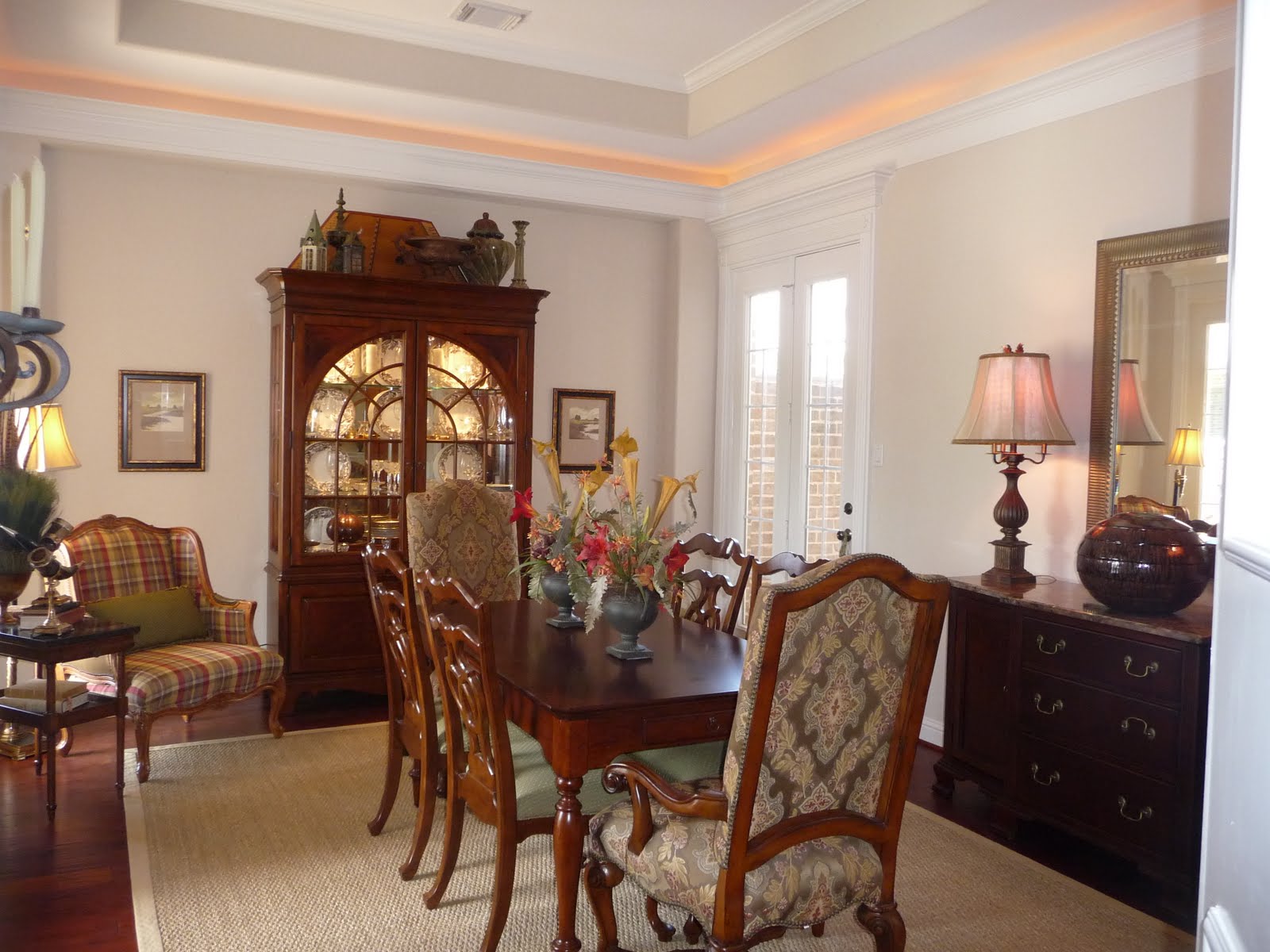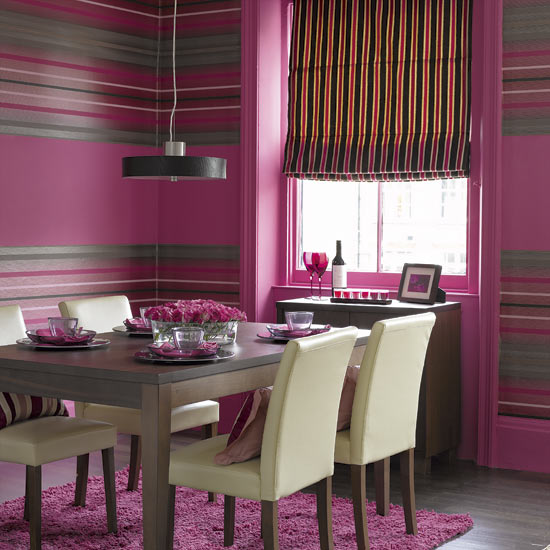If you plan to have a new dining room designed for your home, it's wise to have a basic understanding of the design options available to you.
Size Small dining rooms feel overcrowded if dressed with heavy furniture, dark walls and heavy drapes. In contrast, large rooms feel empty if the dining table is too small, there are few furnishings and the walls are light-colored. Ideas to enhance smaller rooms include adding an additional window or wall cutout to add new dimensions to the space. Windows that open into the kitchen are particularly useful. For larger rooms, tall plants, rich drapes or extra pieces of furniture, e.g. a wine rack, can be tasteful additions.
Formality Opting for either a casual or formal dining space will impact your design choices. For formal spaces, a heavy wooden table with special finish and a fine china cabinet could be chosen. In comparison, for casual spaces, you might decide on a round glass table and a colorful rug to compliment your room. The frequency with which you intend to use your dining area should help steer your design choices, too. You might choose more opulent furnishings for a formal area used only on special occasions as wear and tear isn't a concern. For your casual room, you might need fabrics and accessories that are suited for frequent use.
Accessibility If you plan to entertain often in your dining room, it should be accessible to a bathroom and other gathering areas such as a living room or home theatre. Naturally you will want it to be very close to the kitchen. Whether you opt for a formal or informal arrangement, you will also need to plan a dining setting that is roomy enough for people to move around in without having someone else vacate their seat.
Furniture When planning the ideal dining room, having plenty of space available at the table is a must. It may spoil your well-executed decor if folding chairs have to be added to a crammed table. Anticipate how many people may need to be seated at your table and if this varies greatly, consider purchasing an expandable table. Other than a table and chairs, a dining room has very little furniture needs. This means that additional pieces can be a matter of personal taste. Just be sure your choices do not make the room uncomfortably crowded.
Lighting Guests will need enough lighting to eat their food without trouble, but lighting that is too harsh could cause glare to bounce off white dishes. Crystal chandeliers are great choices for formal rooms while generic lamps might suit your casual room best. One good tip to note: avoid western-facing windows if you like to host dinners - the setting sun might disturb your guests' eyes.













